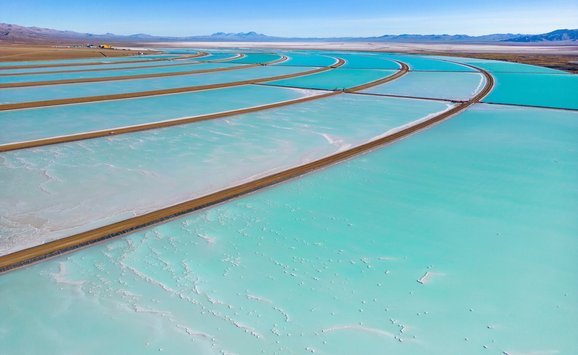The oil shocks and developing countries
The two oil shocks of 1973-74 and 1979-80 boosted the real price of energy five-fold; each transferred around 2 percent of gross world product to the oil-exporting developing countries. For the oil-importing developing countries, oil jumped from one-twelfth to one-quarter of their total imports from 1973-80, requiring either the expansion of competitive exports to absorb the cost or the reduction of other imports and consequent loss in economic growth. In the developing countries as a whole, the rate of growth of gross domestic product fell from 6 percent per annum during 1960-73 to 5.3 percent for 1973-79 and 2.3 percent for 1980-82 (table 1).
The slowdown in the developing countries was significantly less than that in the industrial countries, which failed to react decisively to the oil cost realignment. However, the aggregate figure for the developing countries masks important regional differences: most Asian countries successfully rode out both oil shocks; the Latin American nations scarcely faltered until the 1979-80 shock; while many countries of sub-Saharan Africa were adversely affected on both occasions (see table 1). These regional differences are linked to fundamental domestic policy decisions.
The developing countries that fared best were those that followed domestic policies that did not unduly favor import substitution industries at the expense of domestic agriculture and competitive labor-intensive exports. Such countries, like the newly industrializing countries of southeast Asia and other middle-income commodity exporters in that region, diversified their economies more quickly, so that they were better able to switch from slower-growing to faster-growing economic activities as it became necessary to do so. Many Latin American countries, which borrowed heavily to ease the implementation of economic change, were caught by the unexpectedly sharp rise in interest rates and the associated fall in export opportunities that followed the second oil shock. Other countries, including many in sub-Saharan Africa, which pursued inward-looking domestic policies and were considered high credit risks, were forced to resort to growth-curbing import restrictions; for some, development has been set back two decades.
However, the shift to high-cost energy created the opportunity for some oil-importing countries to exploit hitherto marginal domestic gas and hydroelectric resources, not simply to substitute for imported oil, but also to generate energy exports. These exports might be direct, such as liquefied natural gas or electricity, or they might be indirect, in the form of energy-intensive industrial products, such as aluminum or steel, or gas-based petrochemicals, such as ammonia and methanol. The latter strategy carried the added attraction of accelerating economic diversification through resource-based industrialization. However, the technical and economic difficulties in launching such energy-intensive industrial complexes are formidable and place severe strains on the political fabric of the developing countries. The attempts of Suriname to establish a hydro-based aluminum project illustrate the technical and political problems involved.
The Multi-Annual Development Plan
Suriname, a country of 160,000 square kilometers and 400,000 people on the northern coast of South America, depended heavily on bauxite exports and sought to develop a large hydroelectric project to substitute for oil-generated electricity and expand its aluminum exports. The hydrosmelter project was designed to stimulate development in the empty western region of the country. Related aspects of the project called for regulation of river flow in order to triple the irrigated acreage and expand rice production on the coastal lowland in the extreme northwest of the country.
Table 1. Economic Development 1960-82: Regional Summary of Gross Domestic Product Growth

In the early 1960s, Suriname had successfully launched a hydrosmelter complex at Paranam, south of the capital city of Paramaribo. The second hydrosmelter complex formed the core of the country's Multi-Annual Development Plan. This was initiated when Suriname became independent of the Netherlands in 1975, and was backed by a $1.5 billion grant from the Dutch government. As implementation of the plan proceeded, the initially complementary development of the hydrosmelter complex and agricultural expansion increasingly were portrayed as competing projects that represented "hard"-technology and "green"-technology options and became linked to an emerging right-left political struggle within the newly independent nation.
The original hard-technology proposal
Suriname's Kabalebo River hydrosmelter scheme had greater flexibility than a similar project under consideration in neighboring Guyana since it could be executed in three discrete stages rather than a large single stage. These comprised a first stage of 300 megawatts (MW) for oil substitution; a second stage of 200 MW for the new smelter; and a 300-MW final stage for long-term power needs. The Multi-Annual Development Plan envisaged the construction of the first stages for a total of 500-MW capacity. The first stage, which included much of the basic infrastructure, carried a disproportionately high share of the total costs. It required the construction of a dam with three 100-MW turbines and a diversion dam to double the flow of Kabalebo water through the turbines.

The 1980 cost was estimated at $460 million, yielding just over 800 gigawatts (GW) of base-load power and a further 400 GW of seasonal power. At an average price around 6.5 cents per kilowatt hour, extendable power from stage one was relatively expensive for hydroelectricity generated on such a scale, though it still would be half the cost of power produced in the country's existing small, oil-fired power station, located in the capital city.
The economics of stage two were more attractive: two additional turbines could be installed at the original dam fed by waters from the Corantijn River, which flows along Suriname's western border with Guyana, raising the Kabalebo flow and providing an additional 1,300 GW of dependable power for one-third of the investment required by the first stage. This would reduce the average cost of power from the first two stages combined to below 4 cents per kilowatt hour, while the marginal cost of power from the second stage would be only 1.5 cents per kilowatt hour. This was 0.5 cents below the average power cost for the global aluminum industry and comfortably within the range required to justify new capacity.
Negotiations were begun in 1975 with potential equity partners to develop a 70,000-ton smelter, together with a refinery to process ores from new bauxite mines in the western Bakhuis mountain range. A railroad was built from the ore range to the proposed refinery site on the Corantijn River and a sawmill was built to provide railroad ties as well as construction materials for the planned new town of Apoera.
Delay, inflation, and deteriorating prospects
Large capital-intensive projects such as Suriname's proposed hydrosmelter complex take many years to execute and are, therefore, very vulnerable to inflation. Suriname's first such project, the Afobaka dam and Paranam smelter south of Paramaribo, had taken fourteen years to complete, with five years spent on firming up the technical and economic aspects, two years on negotiating the financial terms and electricity tariff, and seven years on construction. The final Afobaka power cost of 0.25 cents per kilowatt hour in 1966 was little changed from the original estimate and testifies to the low inflation rates of the 1950s and 1960s.
In contrast, the second hydrosmelter complex was being launched in the face of high inflation and market uncertainties. As feasibility studies and negotiations dragged on, inflation pushed up the cost of the project and individual elements in the scheme were jettisoned one by one. In 1977 the alumina refinery was costed out at 50 percent above the cost of competing facilities, and by 1979 it became clear that the proposed 70,000-ton smelter would be half the size of efficient new smelters under consideration elsewhere. Unfortunately, the power available from stage two of Kabalebo was insufficient for a larger smelter and even if stage three were immediately constructed, the average power cost from the combined second and third stages would be above the level needed to ensure viability.
Worse still, it became clear that the new Bakhuis bauxite deposits were much smaller, more difficult to reach, and of lower quality than those of Australia, Brazil, and Guinea, and required processing prior to export in order to offset the resulting high mining costs. While the new western ores could be processed at the existing Paranam complex, even that would be a somewhat risky venture.
Other aspects of the Multi-Annual Development Plan also were falling behind schedule and being unfavorably affected by inflation. By 1980, three agricultural schemes, of which the northwest irrigation project linked to the Kabalebo River was by far the largest, were requiring twice the capital allocated only five years earlier. The additional sum required to complete the agricultural projects was almost equal to what Suriname would contribute from the Dutch-established Independence Fund to the Kabalebo project. At this juncture a military coup destabilized the domestic political situation and set the scene for confrontation between proponents of the hard-technology Kabalebo project and supporters of the green-technology agricultural schemes. The two components of the original development plan, which had appeared complementary, increasingly were presented as alternatives.
Rejection of Kabalebo
The final cost of Kabalebo stage one, as proposed by the World Bank and after allowing for inflation, was estimated to be around $740 million, of which the Surinamese government would meet one-third; the rest would be secured from overseas sources at low rates of interest. The average cost of power would be around 10 cents per kilowatt hour and a straight substitution for existing tariffs was proposed at 17 cents for public users and 5 cents for replacement of diesel power generators at Suralco Paranam complex. Plans were for the aluminum company to gradually turn over its power allocation to the public system as domestic demand outside the bauxite-aluminum industry expanded. Estimates projected that all the foreign debt would be retired within a decade, providing an expanded cash flow to the government as the owner of the hydro facility. Meanwhile, the power available to the bauxite industry could be used to extend the small existing aluminum smelter, expand the large alumina refinery, and boost domestic production of higher-valued calcined exports. These changes were required to offset falling exports of unprocessed bauxite, which were becoming uneconomic as the Paranam mines went deeper and the extraction cost grew. The higher value commanded by processed bauxite can better absorb the higher mining costs.
At first the military coup of 1980 did not appear to affect the implementation of Kabalebo stage one. The objectives of the coup were not immediately clear, beyond a desire to overthrow a parliamentary government that had refused to improve pay and conditions in the army and was considered to be corrupt. The new Military Council had nationalistic overtones and resentment of the two large foreign bauxite companies—Suralco, a subsidiary of Alcoa, and Billiton, a Royal Dutch Shell subsidiary—became more open. In addition, there was a desire to assist the poorer citizens of the new country, but a clear-cut political platform did not emerge because internal power struggles frequently changed the complexion of the government. However, as the World Bank neared the successful conclusion of its long effort to finance the Kabalebo project, the ascendancy of the pre-agriculture lobby in Suriname, supported by sympathizers within the central planning bureau, created a powerful opposition to the hard-technology scheme. In November 1981, an appealing green argument in favor of small-scale, essentially rural development was skillfully deployed in rejecting the World Bank proposals for implementation of Kabalebo stage one and its associated long-term development strategy.
The green-technology option
The green-technology option revolved around the diversion of investment funds from Kabalebo to the three agricultural schemes, with oil imports substituted by extracting small heavy oil resources backfitting small turbines to the existing Afobaka hydro system to increase its output, and in the late 1980s harnessing hydro schemes elsewhere. The successful expansion of rice cultivation in the northwestern lowlands during the 1970s was the inspiration for the agroindustry schemes. State-owned lands, rented by yeoman farmers in 20-hectare plots, would generate adequate rural incomes to help stem the drift to the capital city. The initial rate of return for the proposed large northwestern extension originally was estimated at twice the eight percent return sought on public investments. Although highly mechanized, the proposed rice farms and other agricultural projects in the center and east of the country were expected to make a significant contribution to generating new employment. Emigration had caused the population to decline slightly during the 1970s, but new immigration restrictions in the Netherlands were expected to produce a sharp increase in the demand for jobs during the 1980s.
The opponents of Kabalebo advanced five pragmatic arguments in support of the agricultural strategy, backed by a philosophy favoring small-scale, rural, locally controlled developments. First, inflation and currency depreciation had shrunk the real value of the Netherlands Independence Fund so that hitherto complementary projects now were competitors. Second, with the loss of the western aluminum complex and with no alternative large energy user to permit implementation of stage two, Kabalebo had become unattractive. Third, inflation had doubled the cost of the three job-providing agricultural schemes launched under the Multi-Annual Development Plan, so that they required a much larger share of the Independence Fund. Fourth, reliance on slow-moving overseas agencies for funding was seen as responsible for the costly delays in the Multi-Annual Development Plan: small-scale schemes, directed by Surinamese nationals, were expected to speed implementation. And fifth, the proposed power tariff for Kabalebo stage one unduly favored the country's very large multinational corporation at the expense of other power consumers, including the urban poor. The green-technology arguments promised maximum self-reliance in developing the country, immediate and equitable distribution of benefit throughout society, greater job provision per unit of investment, and ecologically benign agroindustry development powered by small hydro and augmented by biomass and the small heavy oil deposits.
The outcome
As the Military Council drifted politically leftward and sought closer links with the Cuban-backed Bishop government in Grenada, it became increasingly clear that the green-technology arguments had been marshaled to support left-of-center objectives at the expense of a viable development strategy. The green philosophy suited the central planning bureau and the agricultural labor unions because it gave their projects the main role in future national development. The military rulers seized the green case as a coherent and respectable justification for retaining political power, though the army's initial move sprang from discontent over pay levels.
The alternative development plan that integrated the green schemes and was to replace the one built around Kabalebo stage one was promised for mid-1982. It never materialized, and it became ever more clear that firm proposals for harnessing small hydro schemes on the Afobaka system and elsewhere never had been formulated, while revised rates of return on the agricultural projects had declined to half the targeted rate for the investment of public sector funds, and around one-quarter of the original estimates.
Unlike its neighbor Guyana, which could not raise the capital to implement its hydrosmelter scheme, Suriname had come within an ace of executing a long-term development strategy for oil import substitution, the upgrading of bauxite exports to maintain viability of that industry, and the scaled-down expansion of the agricultural schemes. Instead, a decade after the first oil shock, the country has still to formulate a coherent response to the oil import challenge. In that respect, Suriname is not unlike many other small and undiversified developing countries. The technical and economic solutions to the oil shocks may be difficult, but they are known. The political problems associated with implementation are the most difficult to resolve.

Author Richard M. Auty, on the faculty of Lancaster University, is a 1983-84 Gilbert F. White Fellow in RFF's Center for Energy Policy Research, where he is studying prospects for hydro- and gas-based complexes as a development strategy for small mineral economies.







